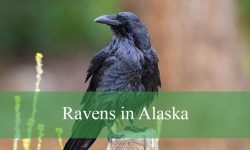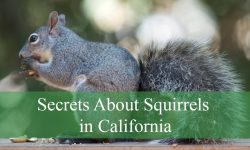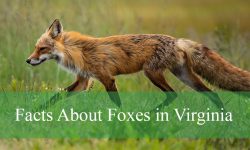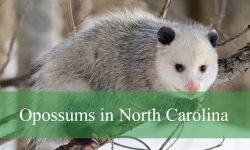Quail are some of the most charming ground birds found across California’s wild landscapes. With their bobbing topknots, soft cooing calls, and scurrying flocks, they bring life to everything from dry desert washes to suburban gardens and forested hillsides.
California isn’t just home to one type of quail—it hosts a rich mix of native species, elusive mountain dwellers, and even a few unexpected visitors from faraway places. Some are common and bold, others are shy and rarely seen, but each has a story worth exploring.
This guide introduces 11 types of quail found in California, complete with pictures, identification tips, habitats, and fun facts. It’s a fresh look at a beloved group of birds that continue to surprise even seasoned birders.
Different Types of Quail Found in California
California Quail (Callipepla californica)
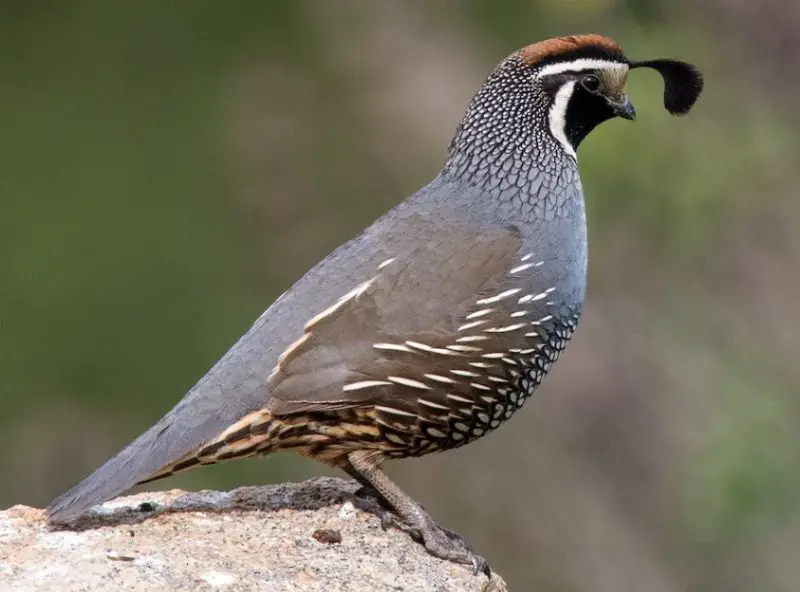
The California Quail is a plump, ground-dwelling bird easily recognized by its forward-drooping black crest, known as a “topknot.” Males display bold black-and-white facial markings with a bluish-gray chest, while females are browner and lack the striking face pattern. Their bellies have a scaled appearance with creamy and chestnut tones. These quails often gather in coveys and make a soft “chi-ca-go” call.
Adults measure around 9 to 11 inches long and weigh approximately 5 to 7 ounces. Their short, rounded wings and long, square tails allow for quick, fluttery takeoffs when startled. Despite their strong legs, they prefer to walk or run rather than fly, especially when foraging or escaping predators.
California Quail breed between April and August, nesting in shallow depressions on the ground, often hidden under shrubs or tall grass. Females lay 12–16 eggs, which hatch in about three weeks. Chicks are precocial, meaning they are active and covered in down feathers at birth, and can follow their parents almost immediately.
These birds thrive in coastal sage scrub, chaparral, foothills, suburban gardens, and agricultural edges. They mainly feed on seeds, grains, flowers, and small insects. Fun fact: Males sometimes help raise chicks from other males in their covey—an unusual display of cooperative parenting among game birds.
Mountain Quail (Oreortyx pictus)
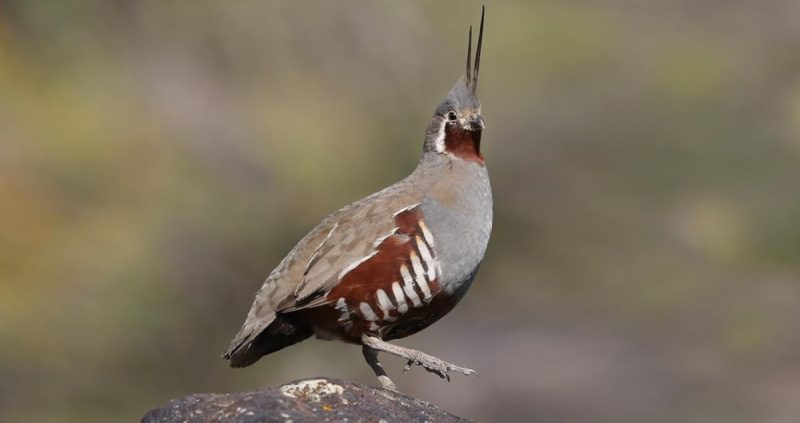
The Mountain Quail is the largest quail species in North America and boasts a dramatic appearance with two long, straight black head plumes and rich chestnut flanks streaked with white. Adults have a gray breast and back, with rufous highlights on the belly. They are more secretive than other quail and prefer dense cover.
They measure about 10 to 12 inches in length and weigh 8 to 9 ounces, making them significantly larger than California Quail. Mountain Quail are strong walkers and use their powerful legs to navigate steep mountain slopes and thick undergrowth, although they can burst into flight when alarmed.
Breeding occurs in late spring to early summer, with females laying 6 to 10 eggs in a hidden nest on the ground. Both parents may assist with brooding and leading the chicks after hatching. Their chicks are able to leave the nest soon after birth and forage with the adults.
Mountain Quail inhabit high-elevation forests, chaparral, and brushy slopes, particularly in the Sierra Nevada and Coast Ranges. They feed on seeds, berries, buds, and small insects. Fun fact: Unlike most quail, Mountain Quail migrate vertically—moving down from higher elevations during winter instead of flying long distances.
Gambel’s Quail (Callipepla gambelii)
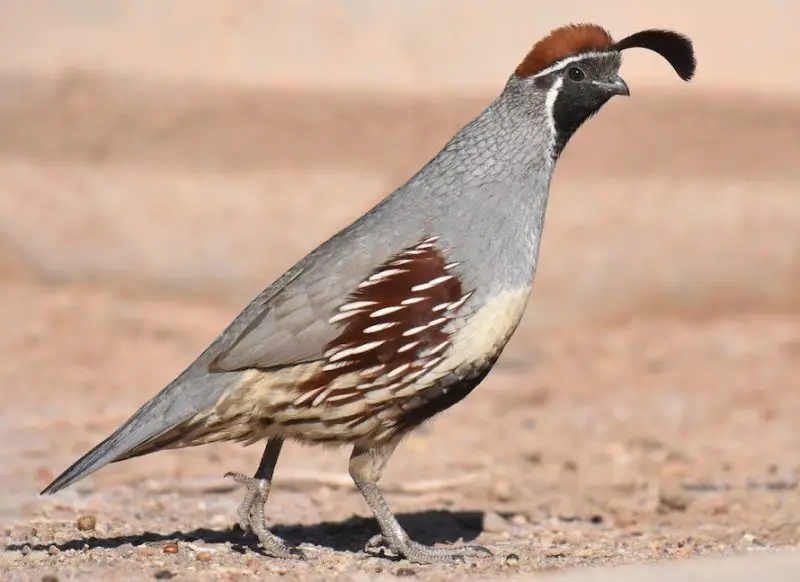
Gambel’s Quail are desert-adapted birds known for their elegant comma-shaped black topknot and scaled chest. Males have a black face, throat, and prominent chestnut crown, while females have plainer gray plumage. A black belly patch helps distinguish males from the more uniformly colored females.
They measure around 9.5 to 11 inches and weigh 5.5 to 6 ounces, similar in size to California Quail but slimmer in build. Their short wings and strong legs are perfect for quick, low flight and swift dashes through desert brush when threatened.
Gambel’s Quail breed in spring and early summer, depending on rainfall. Females typically lay 10 to 14 eggs in a shallow ground nest, often under cacti, shrubs, or even man-made structures. Chicks hatch fully feathered and begin following their parents within hours.
This species lives primarily in desert scrub, mesquite thickets, and riparian corridors in southeastern California, especially along the Colorado River and the Mojave Desert. Their diet includes seeds, leaves, berries, and cactus fruit. Fun fact: Gambel’s Quail don’t need standing water—moisture from plants and insects often suffices in their arid habitat.
Scaled Quail (Callipepla squamata)
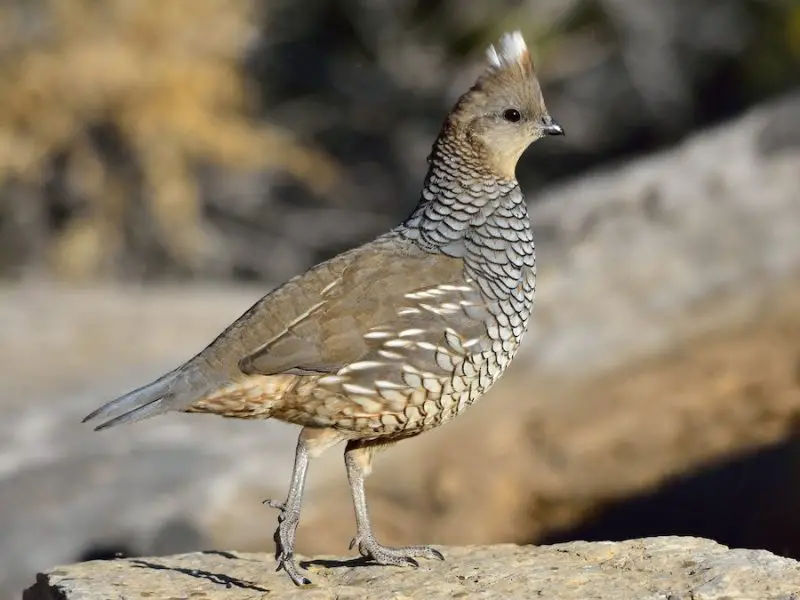
The Scaled Quail, also known as the Blue Quail, gets its name from its unique feather pattern—bluish-gray plumage with scale-like markings across the chest and back. Unlike other quail, it lacks a forward-facing topknot and instead has a short white crest resembling a cotton ball.
Adults measure about 10 to 12 inches and weigh 6 to 8 ounces. They are fast runners and will often flee danger on foot rather than take flight. Their posture is upright and alert, especially in open terrain where cover is limited.
Breeding season occurs from April to July, with nests hidden under shrubs or grass clumps. Females lay 9 to 16 eggs, and incubation lasts about three weeks. Chicks leave the nest shortly after hatching and forage alongside adults for seeds and insects.
Scaled Quail are rare in California, primarily found near the Arizona and Nevada borders in dry grasslands, open plains, and desert flats. They are more common in states like New Mexico and Texas. Fun fact: When startled, Scaled Quail often burst into a “comet-like” explosive run, instead of flying, making them hard to flush.
Northern Bobwhite (Colinus virginianus)

The Northern Bobwhite is a small, plump quail with a short tail and rounded body. Males are striking, with a white throat and bold white stripe above the eye contrasting with a black cap and face. Females have similar markings but in a buff or tan shade instead of white.
Measuring 9 to 10.5 inches and weighing around 5 to 6 ounces, this species is slightly smaller than Mountain Quail. Their distinctive whistled “bob-WHITE!” call is often heard in spring and early summer, even if the bird itself remains hidden in tall grass.
Bobwhites breed in late spring and summer, with females laying 12 to 16 eggs in a ground nest lined with grass. Both parents may tend the chicks, which are precocial and begin feeding immediately after hatching.
Though not native to California, Northern Bobwhite have been introduced for hunting and game farms, and occasional feral populations exist in Central Valley, grasslands, and oak savannas. Fun fact: Bobwhite coveys sleep in a tight circle with heads out and tails in—a strategy that maximizes warmth and predator detection.
Montezuma Quail (Cyrtonyx montezumae)
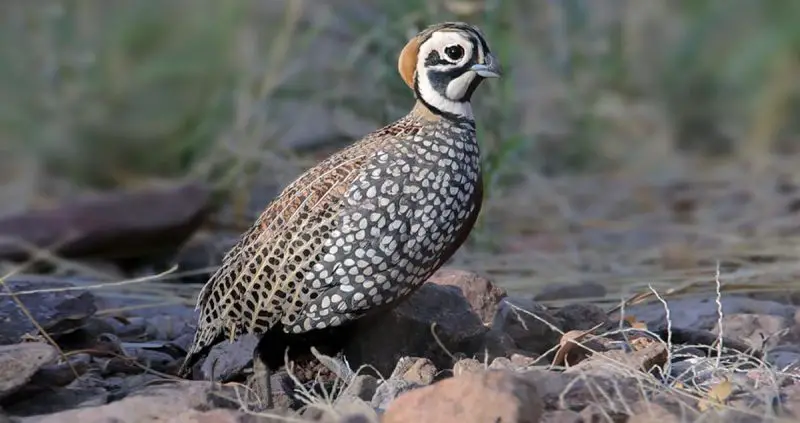
The Montezuma Quail is a shy, cryptic species with a round body and short tail, covered in intricately patterned plumage. Males have bold black-and-white facial markings, chestnut flanks with white spots, and a heavily spotted belly, while females are more subtly colored in tan and brown. Both sexes appear chubby and low to the ground.
This species measures about 9 to 10 inches and weighs 6 to 8 ounces, with a short, stocky build and relatively small head. They are notoriously hard to spot, as they freeze and crouch motionless in thick grass instead of flushing like other quail.
Montezuma Quail breed in late summer, usually after summer rains. Their nests are well-hidden, dome-shaped structures built from grass. Females lay 6 to 12 eggs, and both parents may help care for the young after hatching.
In California, this species is extremely rare, occasionally observed near the southeastern border. They prefer oak woodlands, grassy slopes, and pine forests with dense ground cover. Fun fact: Montezuma Quail specialize in digging up bulbs and tubers, using their strong legs to scratch deeply into the soil.
Japanese Quail (Coturnix japonica)
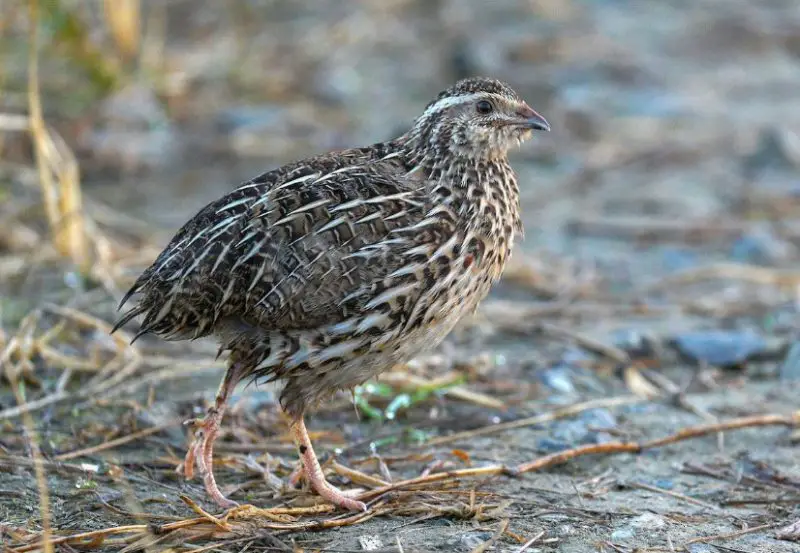
The Japanese Quail is a small, compact bird with brown, mottled plumage and a pale belly. Males have a rusty-colored throat, while females have a paler throat and more speckled breast. They resemble the Common Quail but are slightly more robust and have a louder call.
They measure about 7 to 8 inches in length and weigh around 3.5 to 5 ounces, making them smaller than native New World quail. Japanese Quail are fast runners and quick fliers, though they prefer to stay on the ground when undisturbed.
These quail are prolific breeders, with females laying up to 300 eggs per year in captivity. In the wild or semi-feral populations, they nest on the ground in grassy areas and can raise multiple broods in a year.
Although not native to California, Japanese Quail are widely bred for eggs and meat, and occasional individuals escape or are released into the wild. They may be spotted near farms, suburban areas, and grasslands. Fun fact: Japanese Quail have been used extensively in biological research, including space missions due to their rapid breeding cycle.
Common Quail (Coturnix coturnix)
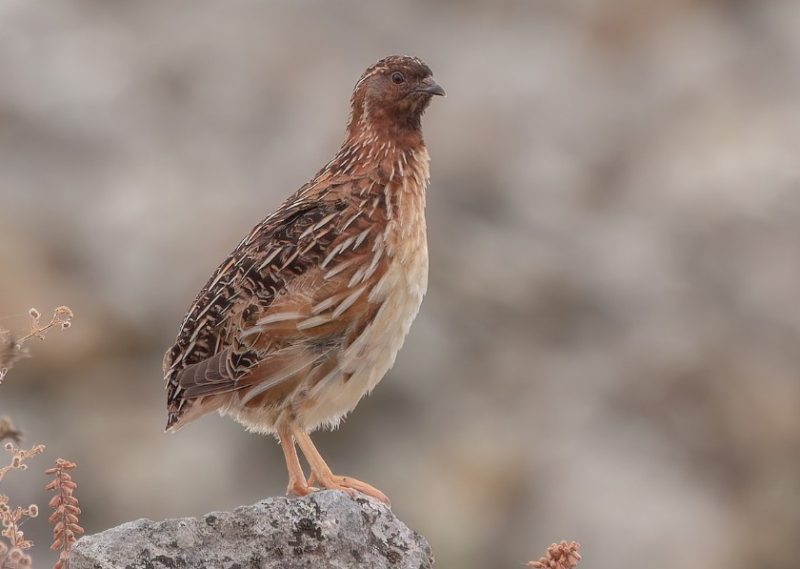
The Common Quail is a small, migratory species from Eurasia and Africa, with a streaky brown back, buff belly, and light eyebrow stripe. Males produce a distinctive “wet-my-lips” call during the breeding season. They closely resemble Japanese Quail, though they are typically slimmer.
Adults are 6.5 to 7 inches long and weigh 2.5 to 3.5 ounces. Their compact bodies and short wings are built for endurance flight, as they migrate long distances between breeding and wintering grounds in their native range.
Breeding in their native habitat takes place in late spring, with 8 to 12 eggs laid in a simple ground scrape. The female incubates the eggs alone and raises the chicks until they fledge.
In California, Common Quail are not established in the wild, but they have occasionally been introduced for hunting or ornamental purposes. Rare escapees may be seen in grasslands or fields near farms. Fun fact: Unlike most quail in California, the Common Quail is a strong flier and capable of crossing seas during migration.
King Quail (Synoicus chinensis)
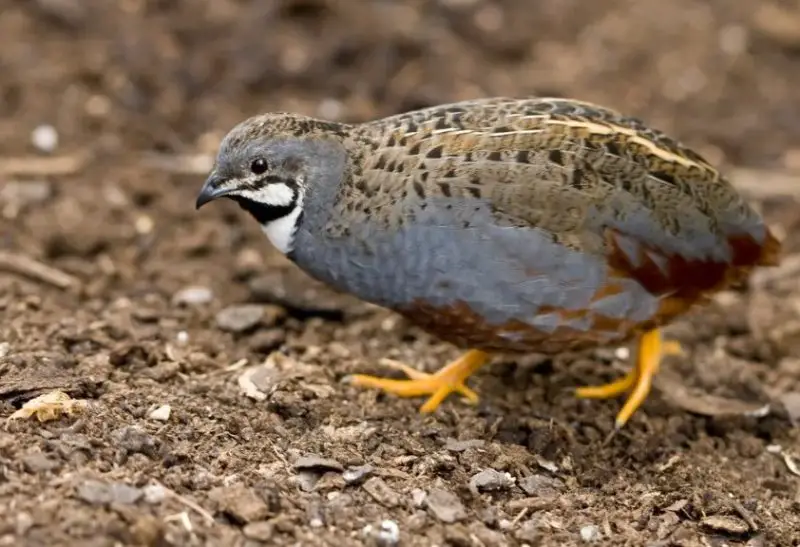
The King Quail, also known as the Asian Blue Quail or Button Quail in the pet trade (not to be confused with true buttonquails), is a very small and colorful species. Males often have deep blue plumage on the chest with rufous flanks and a black-and-white face pattern, while females are mostly brown and lack the bold markings.
This species is only about 4.5 to 5.5 inches long and weighs 2 to 3 ounces, making it the smallest quail on this list. They have short wings and tails, and rarely fly unless startled. Their behavior is typically shy and secretive, preferring to stay hidden in dense grass.
In captivity, King Quail are enthusiastic breeders, laying 6 to 12 eggs in grassy nests. They are popular in aviaries due to their small size, ease of breeding, and attractive appearance. In the wild, they live in grassy wetlands and rice paddies across Asia.
King Quail are not native or established in California, but occasional escapees from captivity may be seen in gardens, aviary surroundings, or grassy areas. Fun fact: Despite their small size, males will perform elaborate courtship displays that include puffing up, tail fanning, and “dancing.”
Buttonquail (Turnix spp.)
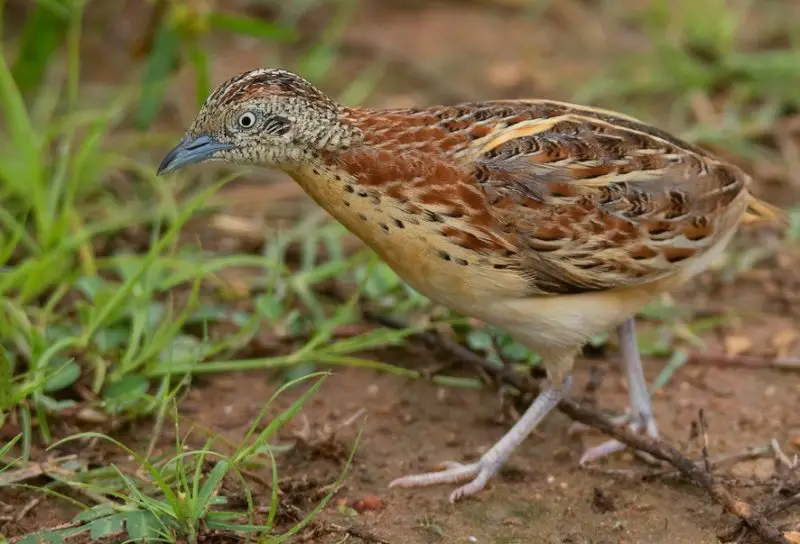
Buttonquails are not true quail but belong to a separate family, Turnicidae, and are more closely related to shorebirds. They are small, secretive ground-dwellers with short tails, streaked brown plumage, and an unusual gait. Females are larger and more brightly colored than males—a reversal of typical bird sexual dimorphism.
They average about 5 to 6 inches in length and weigh 1.5 to 2 ounces, depending on the species. Their calls are soft and low-pitched, and they are extremely difficult to spot in the wild due to their camouflage and tendency to freeze rather than flush.
In their native range, Buttonquails breed on the ground, with the female initiating courtship. After laying 4–5 eggs, the male incubates and raises the chicks—a rare role reversal in birds. Nests are hidden in grassy clumps or shallow depressions.
In California, no native species of Buttonquail exists, but ornamental species may escape from captivity. They may occasionally be seen in aviary areas or ornamental gardens, especially after escaping. Fun fact: Buttonquails lack a true crop (food storage pouch), which is rare among land birds.
Elegant Quail (Callipepla douglasii)
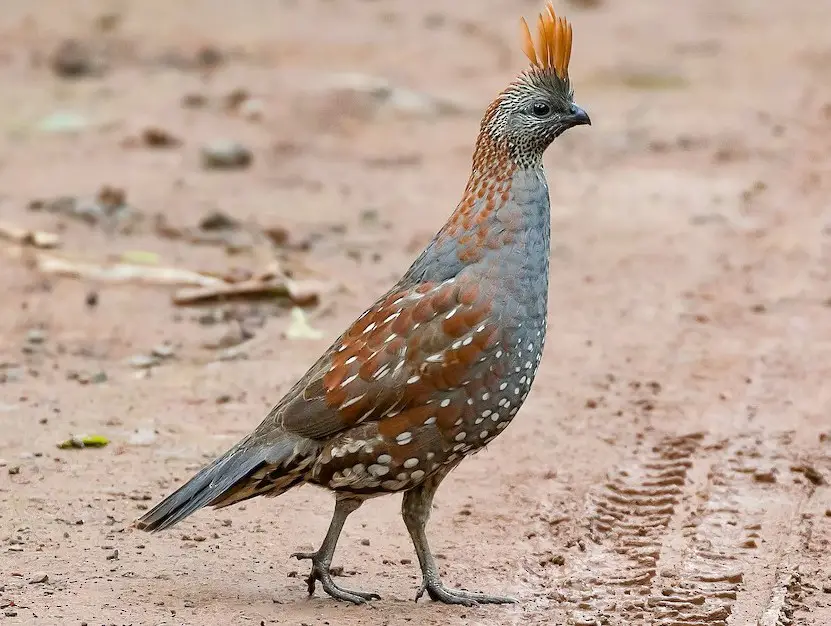
Elegant Quail is a beautifully marked species typically native to northwestern Mexico, but it has been reported as a rare vagrant in far southern parts of California, especially near the border. Its vibrant plumage, especially the striking chestnut and black face markings with a long forward-drooping crest, makes it stand out from other New World quail.
This species is smaller than the California Quail, measuring about 9–10 inches in length. Males are more colorful, with black and white barring on the belly and a more pronounced crest. Females are duller, with a grayer overall tone but still show a short crest. Elegant Quail can sometimes be confused with Gambel’s Quail, but their range is more restricted and sightings in California are uncommon.
In their native range, Elegant Quail prefer thorn forests, arid woodlands, and scrub habitat, often feeding on seeds, berries, and insects. They are social birds and form coveys, especially in the non-breeding season. In California, rare sightings have been made near the extreme southern desert regions, likely due to wandering or accidental introduction.
Fun Fact: The Elegant Quail’s long forward-curving crest is unique among U.S. quail species, giving it an almost comical but charming appearance.
FAQs About Quail in California
What is the most common quail species in California?
The California Quail (Callipepla californica) is the most common and widespread quail species in the state. It is also the official state bird of California. These birds are easily recognized by their forward-drooping topknot and scaled belly feathers.
Where can I see quail in California?
Quail can be seen in a wide variety of habitats depending on the species. California Quail are often spotted in chaparral, suburban gardens, and oak foothills. Mountain Quail prefer dense brush and high-elevation forests, while Gambel’s Quail are found in southeastern deserts such as the Mojave and Sonoran regions.
What do quail eat in the wild?
Quail are omnivores and primarily feed on seeds, grasses, berries, and insects. Their diet varies by season. In spring and summer, chicks rely heavily on protein-rich insects, while adults eat more seeds and plant material throughout the year.
Do quail fly?
Yes, quail can fly, but they prefer to walk or run. When startled, they make a rapid, explosive flight known as a flush, but they usually travel short distances and return to the ground quickly.
When is quail breeding season in California?
Most quail species in California breed between April and August, depending on rainfall and temperature. Nests are built on the ground and are usually well-hidden under shrubs or tall grass.
Are quail protected in California?
Wild quail populations are protected under state regulations, but hunting is allowed for certain species during designated seasons with a proper license. It is illegal to capture or kill quail outside the hunting season without a permit.
Can you keep quail as pets in California?
Yes, certain quail species like Japanese or King Quail can be kept as pets in California. However, native species like the California Quail or Mountain Quail may require special permits if bred or kept in captivity.
What’s the difference between California Quail and Gambel’s Quail?
While both species have topknots, Gambel’s Quail has a more prominent black belly patch and is typically found in desert regions, whereas California Quail prefers chaparral and coastal areas and lacks the black patch.
Are there non-native or introduced quail in California?
Yes. Species like the Japanese Quail, Common Quail, Northern Bobwhite, and King Quail are non-native and have been introduced for farming, hunting, or ornamental purposes. These birds may occasionally be spotted in the wild after escaping captivity.
Do quail migrate?
Most quail in California are non-migratory, but some, like the Mountain Quail, practice elevational migration, moving to lower elevations during winter months rather than long-distance travel.

